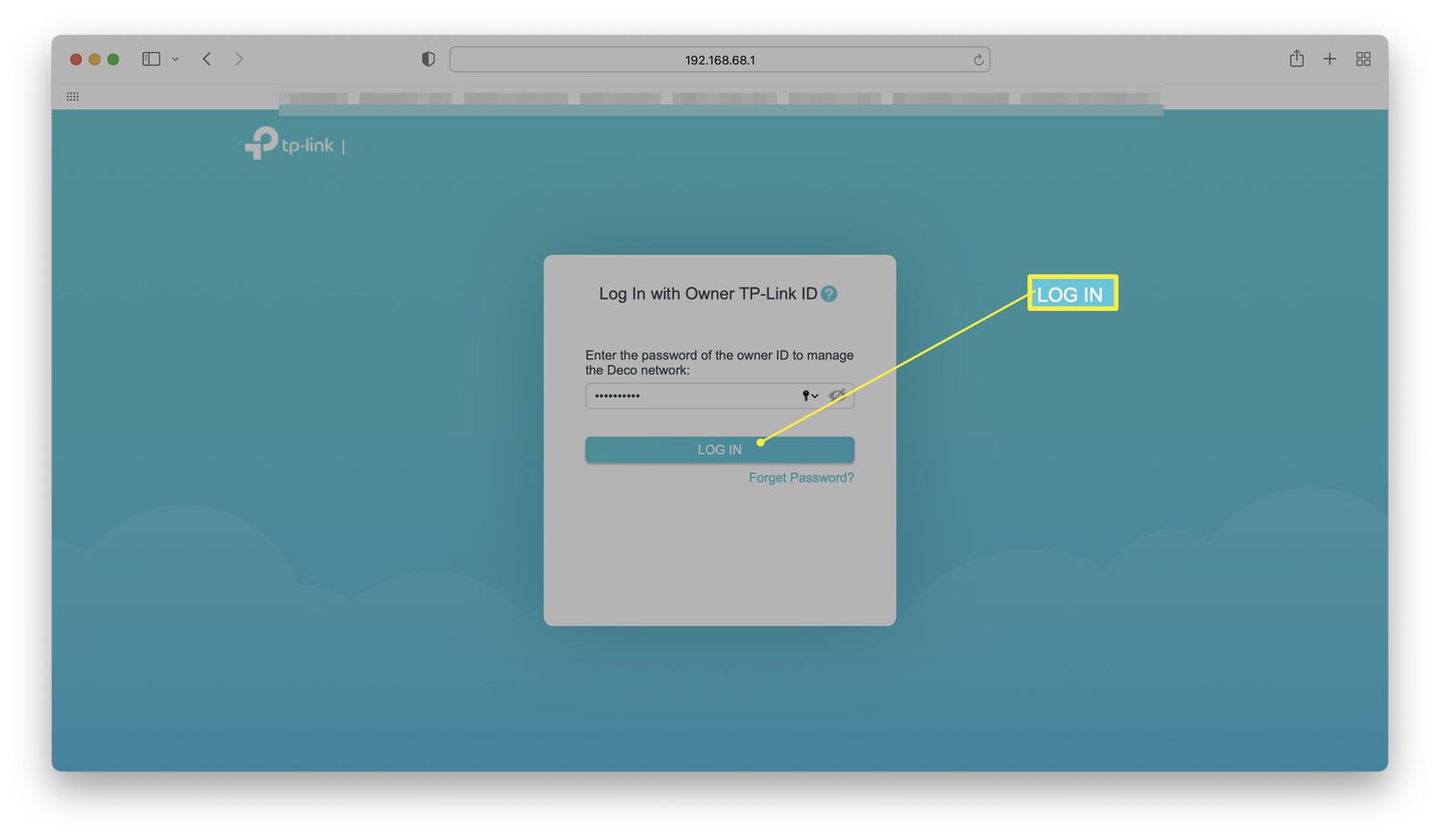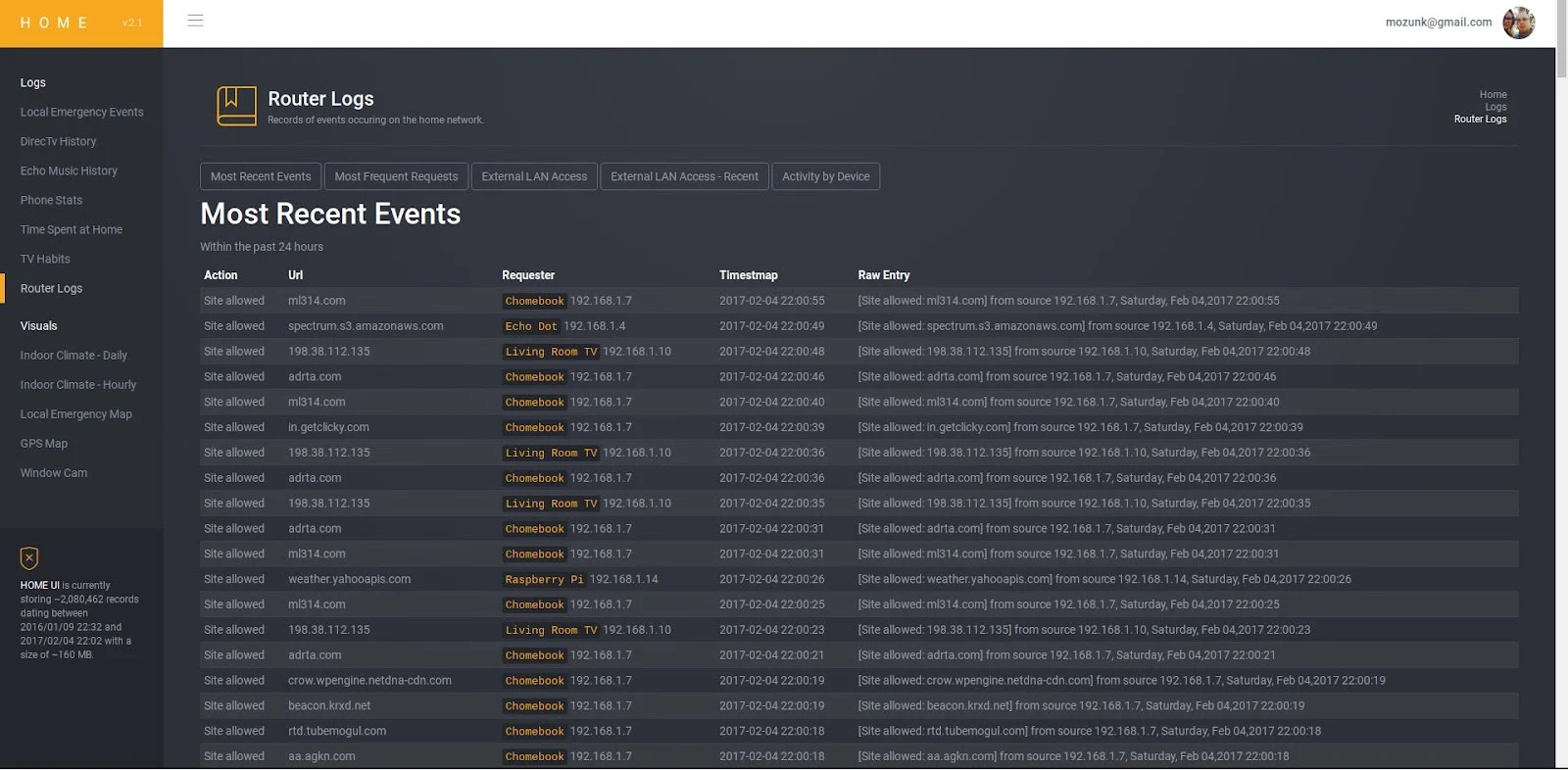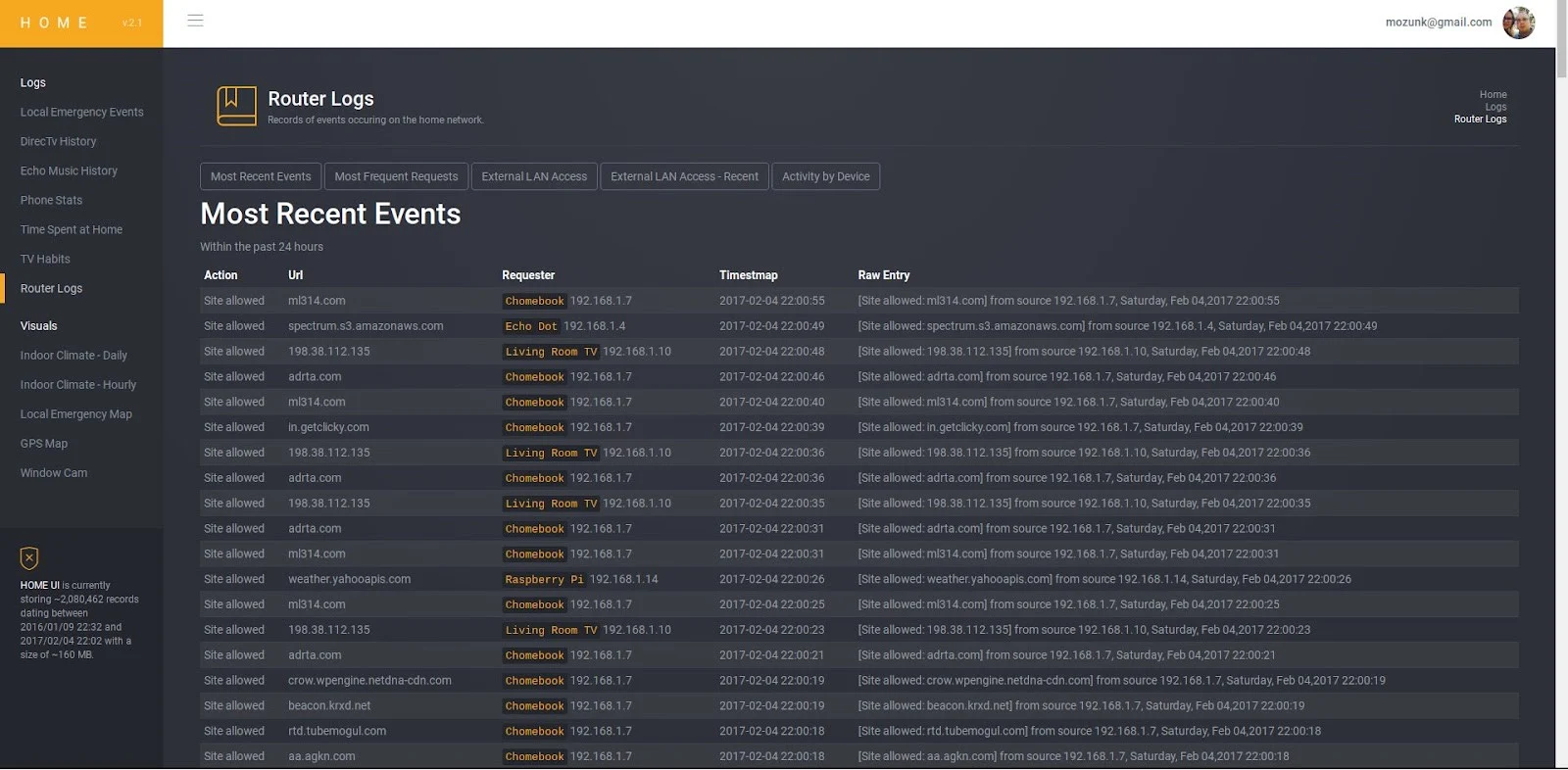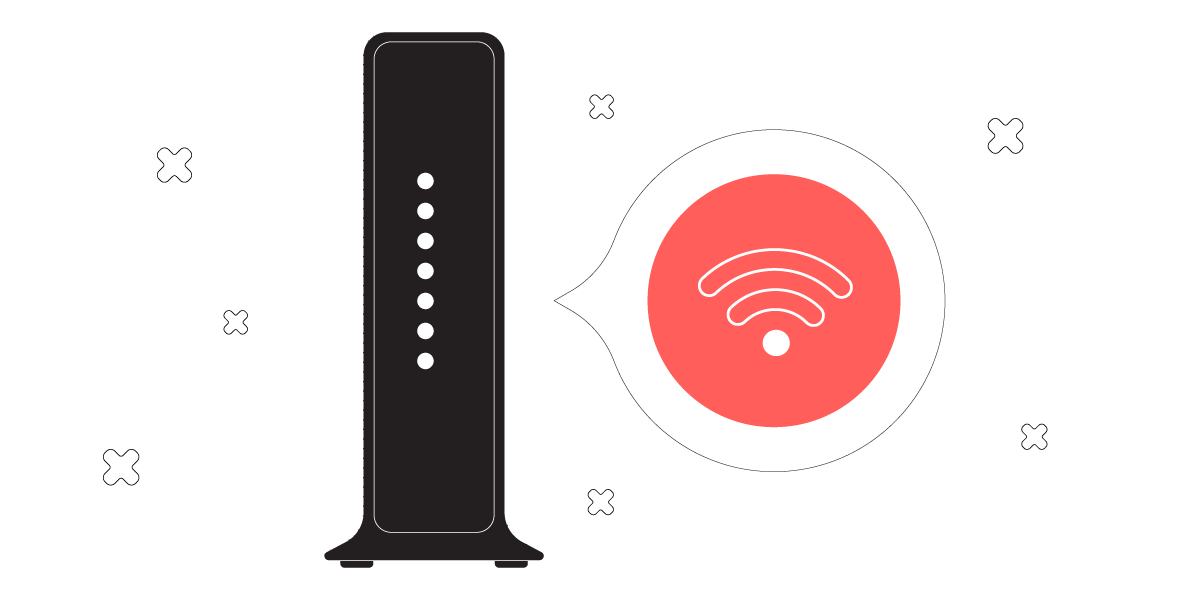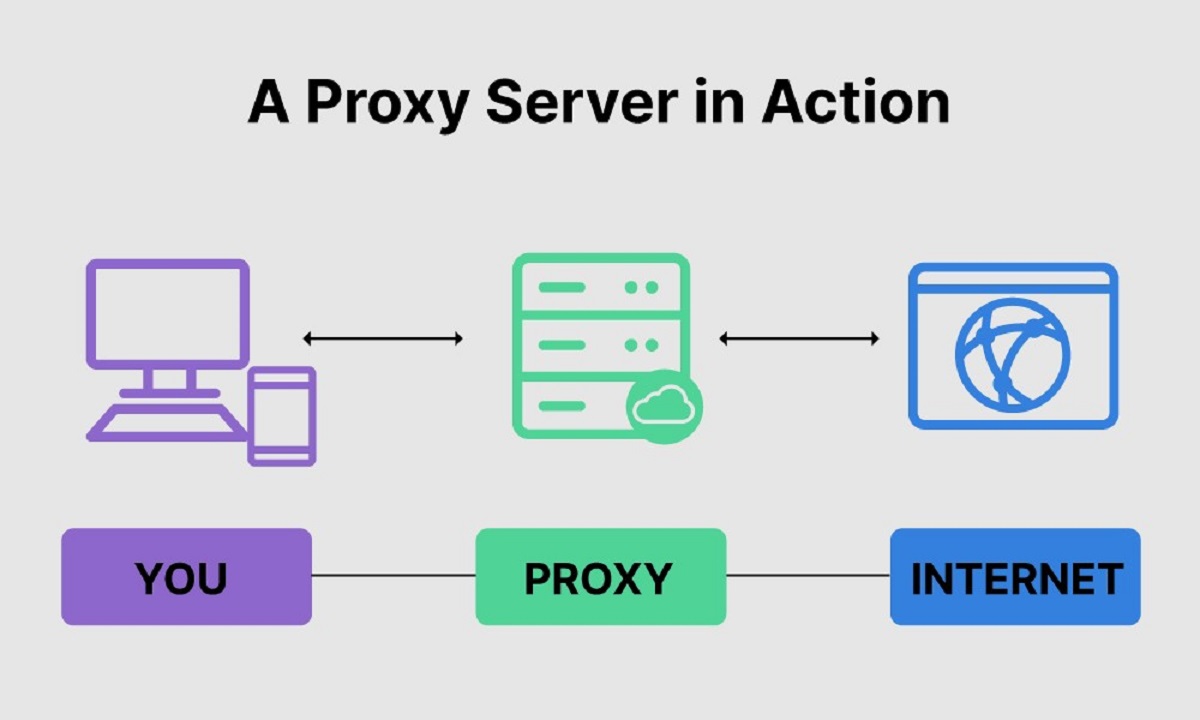Introduction
Welcome to the age of technology, where the internet plays a vital role in our lives. With the advent of smart devices and the growing dependency on the internet, it’s natural to want to keep tabs on the websites visited by the devices connected to your wifi network. Whether you’re a concerned parent wanting to ensure safe browsing for your children or an employer looking to monitor employee internet usage, being able to track websites visited on your wifi can provide valuable insights and help you maintain a secure and productive environment.
In this article, we’ll explore different methods to monitor websites visited on your wifi network. We’ll discuss both built-in options available in your router’s admin panel and external software/applications that offer advanced monitoring features. Additionally, we’ll cover network monitoring tools, DNS logging, and the installation of a proxy server as alternative options to monitor internet activity. However, it’s important to note that while monitoring websites visited by devices connected to your wifi network can be helpful, there are legal considerations and boundaries that should be respected.
By the end of this article, you’ll have a clear understanding of the various options available to you for monitoring websites visited on your wifi network and be able to make an informed decision based on your specific needs and requirements.
Why Monitor Websites Visited on Your Wifi?
The internet is a vast and ever-expanding space, filled with all kinds of information and content. While it offers numerous educational and entertainment opportunities, there are also potential risks and concerns associated with unrestricted internet access. Monitoring the websites visited on your wifi network can help address these concerns and provide several benefits:
- Internet Safety: By monitoring the websites visited on your wifi network, you can ensure that inappropriate or harmful content is not accessed by children or other users. This helps to create a safer online environment and protects against potential risks such as exposure to explicit material or online predators.
- Security and Privacy: Monitoring website activity can help identify any suspicious or potentially malicious websites visited by devices on your wifi network. This can help you detect and respond to potential cybersecurity threats, such as phishing attempts or malware downloads. Additionally, monitoring can help ensure that sensitive information is not being leaked or accessed without authorization.
- Productivity Management: For employers, monitoring website activity on your wifi network can help ensure that employees are using company resources efficiently and effectively. By tracking internet usage, you can identify any excessive or unauthorized browsing that may be impacting productivity. This can aid in promoting a more focused and productive work environment.
- Bandwidth Optimization: Monitoring websites visited on your wifi network can help you identify which websites or applications are consuming excessive bandwidth. This information can be useful in optimizing your network resources and ensuring a smooth and consistent internet experience for all users.
While the above reasons highlight the advantages of monitoring website activity, it is important to strike a balance and respect the privacy of the individuals using the wifi network. It is recommended to establish clear guidelines and communicate openly with family members or employees about the purpose and extent of the monitoring. This fosters trust and ensures that monitoring is done responsibly and ethically.
Legal Considerations
Before delving into the various methods of monitoring websites visited on your wifi network, it is crucial to understand the legal implications associated with this practice. Different countries and jurisdictions have their own laws regarding privacy, data protection, and monitoring of internet activity. It is essential to abide by these laws and regulations to ensure compliance and protect the rights of individuals using your wifi network.
Here are some legal considerations to keep in mind when monitoring websites visited on your wifi network:
- Consent: In many jurisdictions, it is required to obtain the explicit consent of individuals before monitoring their internet activity. This applies to both employees and household members. Make sure to inform all users connected to your wifi network about the monitoring and obtain their consent in a clear and transparent manner.
- Data Protection: When monitoring website activity, you may collect and process personal data. It is important to handle this data in compliance with applicable data protection laws and regulations. Ensure the collected data is kept secure and only used for the intended purposes.
- Employee Monitoring: If you are monitoring the internet activity of employees, familiarize yourself with local employment laws. Some jurisdictions require employers to provide notice to employees before implementing any monitoring practices. Additionally, it is essential to define the scope and purpose of the monitoring, ensuring it aligns with legitimate business interests.
- Privacy Policies: If you are using third-party monitoring software or tools, ensure that they have robust privacy policies in place. Review these policies to understand how they handle and secure the collected data. Select tools that prioritize data protection and compliance with relevant regulations.
- Monitoring Exceptions: Be aware of any legal exceptions to monitoring, such as emergency situations or when required by law enforcement agencies. Familiarize yourself with the specific conditions and limitations under which such monitoring is permissible.
It is always advisable to consult with legal professionals or seek expert advice to ensure compliance with applicable laws and regulations. Being aware of the legal considerations and respecting the rights and privacy of individuals will help you engage in responsible and lawful monitoring practices.
Option 1: Using Your Router’s Admin Panel
One of the simplest ways to monitor websites visited on your wifi network is by accessing your router’s admin panel. Most routers offer built-in features that allow you to track internet activity and view a log of websites visited. Here’s how you can use your router’s admin panel for monitoring:
- Access the Admin Panel: Open a web browser on a device connected to your wifi network and enter your router’s IP address in the address bar. This information can usually be found on the router itself or in the instruction manual provided by the manufacturer.
- Enter Login Credentials: Once you access the admin panel, you will be prompted to enter login credentials. These details are typically provided with the router or can be obtained from the manufacturer’s website. Enter the username and password to proceed.
- Navigate to Internet History: Look for a section in the admin panel that allows you to view internet history or browsing logs. Different routers may have varying names for this section, such as “Logs,” “Activity,” or “History.” Explore the options in your router’s settings to locate this feature.
- Monitor Website Activity: Once you find the internet history section, you should be able to see a log of websites visited by devices connected to your wifi network. Some routers may provide detailed information, including the date, time, and duration of each visit. This log can help you track and monitor website activity.
- Additional Settings: Some advanced routers may offer additional settings to enhance your monitoring capabilities. For example, you might be able to block specific websites or set up notifications for certain website visits. Explore these options if they are available in your router’s admin panel.
Using your router’s admin panel offers a convenient and straightforward way to monitor website activity on your wifi network. However, it’s important to note that the features and interface of admin panels may vary across different router models. Refer to your router’s documentation for specific instructions tailored to your device.
Option 2: Third-Party Software/Applications
If you’re looking for more advanced features and comprehensive monitoring capabilities, you can consider using third-party software or applications specifically designed for website monitoring on your wifi network. These tools offer a range of functionalities, including real-time tracking, detailed reports, and additional security measures. Here’s how you can utilize third-party software/applications for monitoring:
- Research and Select Software: Begin by researching different third-party software and applications available in the market. Look for reputable options that align with your monitoring needs and preferences. Consider factors such as ease of use, compatibility with your router, and the scope of monitoring features offered.
- Install and Configure: Once you’ve selected the software or application that suits your requirements, follow the installation instructions provided by the developer. Typically, this involves downloading the software onto a device connected to your wifi network and going through a setup process. During the configuration, you may be required to enter relevant information such as your wifi network details.
- Monitor Website Activity: Once the software/application is installed and configured, you can start monitoring website activity on your wifi network. Access the dashboard or user interface provided by the software and navigate through the various monitoring options. You should be able to see real-time data, generate reports, and set up specific alerts or notifications for certain website visits.
- Manage Privacy and Security: When using third-party software/applications, it is crucial to prioritize privacy and security. Ensure that the software you choose has robust security features and data protection measures in place. Review the privacy policy of the developer to ensure they handle your data responsibly. Additionally, consider implementing any necessary safeguards, such as using encryption or secure connections, to protect the information collected during monitoring.
- Stay Updated and Maintain: Periodically check for software updates and apply them to ensure you have the latest features and security patches. Regularly review and analyze the monitoring data to gain insights into website activity. Adjust the settings and configurations as needed to optimize your monitoring experience.
Using third-party software or applications can offer greater flexibility and advanced features for monitoring website activity on your wifi network. However, it’s important to conduct thorough research and choose reputable software from trusted developers to ensure reliable and secure monitoring.
Option 3: Network Monitoring Tools
If you’re looking for a more comprehensive approach to monitoring the websites visited on your wifi network, network monitoring tools can be an excellent choice. These tools are specifically designed to provide in-depth insights into network activity, including website visits, bandwidth usage, and overall network performance. Here’s how you can utilize network monitoring tools for website monitoring:
- Research and Select a Network Monitoring Tool: Start by researching different network monitoring tools available in the market. Look for tools that offer website monitoring features along with other network management capabilities. Consider factors such as ease of use, compatibility with your network infrastructure, and the level of detail provided in monitoring reports.
- Install and Configure the Tool: Once you’ve selected a network monitoring tool, follow the installation instructions provided by the developer. Install the tool on a device connected to your network and configure it to scan and monitor internet activity. This typically involves specifying the IP range of your network and setting up monitoring parameters.
- Analyze Website Activity: With the network monitoring tool up and running, you can start analyzing website activity on your wifi network. Access the dashboard or user interface of the tool and explore the various monitoring features available. You should be able to view real-time data, generate comprehensive reports, and analyze website visits by device or user.
- Utilize Advanced Monitoring Features: Network monitoring tools often offer advanced features for website monitoring. These can include the ability to set up custom alerts for specific website visits, track individual user browsing behavior, and even block or restrict access to certain websites. Take advantage of these functionalities to align the monitoring with your specific requirements.
- Maintain and Optimize: Regularly review the monitoring data provided by the network monitoring tool and make necessary adjustments to optimize your wifi network. Identify any abnormal or suspicious website activity and take appropriate actions to mitigate potential risks. Keep the tool updated with the latest software updates and patches to ensure optimal performance and security.
Network monitoring tools offer a comprehensive solution for monitoring website activity on your wifi network. They provide extensive insights to help you understand internet usage patterns, detect potential security threats, and optimize network performance. However, be sure to select a reliable and reputable tool that fits your network environment and aligns with your monitoring objectives.
Option 4: DNS Logging
DNS (Domain Name System) logging is another method you can employ to monitor the websites visited on your wifi network. DNS logs provide information about the domain names accessed by devices on your network, allowing you to track website activity at the domain level. Here’s how you can utilize DNS logging for website monitoring:
- Configure DNS Server: To enable DNS logging, you need to configure the DNS server used by your wifi network. Access your router’s admin panel and navigate to the DNS settings. Look for an option to specify a custom DNS server or enable DNS logging.
- Select a DNS Logging Service: Choose a DNS logging service or software that suits your monitoring needs. There are various options available, both free and paid, that can help you log and analyze DNS queries made by devices on your network.
- Set Up DNS Logging: Follow the instructions provided by the selected DNS logging service to set up DNS logging for your network. This typically involves configuring your router to forward DNS queries to the logging service or installing software on a device connected to your wifi network.
- Analyze DNS Logs: Once the DNS logging is enabled, you can start analyzing the logged data. The DNS logs will provide you with information about the domain names accessed by devices on your network, along with timestamps and other relevant details. You can use this information to track website visits and gain insights into user browsing behavior.
- Implement Privacy Measures: When logging DNS activities, it is essential to consider privacy concerns. Ensure that the DNS logging service you choose follows industry best practices for data protection. Furthermore, consider implementing measures to protect the privacy of individuals using your network, such as anonymizing or encrypting the logged data.
DNS logging offers a straightforward way to monitor website activity on your wifi network by tracking the domain names accessed. It provides a high-level view of internet usage, allowing you to gain insights into website visits. However, keep in mind that DNS logging may not provide as detailed information as other monitoring methods, such as accessing the router’s admin panel or using third-party software.
Option 5: Installing a Proxy Server
Installing a proxy server is a more advanced option for monitoring websites visited on your wifi network. A proxy server acts as an intermediary between devices on your network and the internet, allowing you to intercept and monitor internet traffic. By setting up a proxy server, you can gain more control over website access and monitor browsing activity in real-time. Here’s how you can utilize a proxy server for website monitoring:
- Select a Proxy Server Software: Begin by selecting a proxy server software that suits your monitoring needs. Look for a reputable and feature-rich solution that offers logging capabilities and allows you to customize access policies.
- Install and Configure the Proxy Server: Once you’ve chosen the proxy server software, follow the installation instructions provided by the developer. Install the proxy server on a device connected to your wifi network and configure it according to your network setup.
- Set Access Policies: Configure the proxy server to define access policies for website browsing. You can specify which websites or categories of websites users are allowed to access and set up filters to block or restrict certain content. By controlling website access, you can monitor and manage internet usage more effectively.
- Enable Logging: Enable logging features in the proxy server software to start capturing and storing website activity data. The logs will provide information about the websites visited by devices on your network, along with timestamps and other relevant details.
- Analyze Proxy Server Logs: Once the proxy server is up and running, you can analyze the logs to gain insights into website visits. The logs will help you track browsing activity, identify patterns, and monitor user behavior in real-time. Some proxy server software also offers reporting capabilities for more in-depth analysis.
- Secure and Maintain the Proxy Server: It is crucial to secure the proxy server to protect against unauthorized access and ensure the privacy of individuals using your network. Regularly update the proxy server software with the latest patches and security updates. Monitor and manage access policies to align with your monitoring objectives and network requirements.
Installing a proxy server provides you with advanced monitoring capabilities and increased control over website access on your wifi network. However, setting up and managing a proxy server can be complex, requiring technical knowledge and ongoing maintenance. Consider seeking assistance or consulting with experts if needed.
Protecting Your Privacy While Monitoring
While monitoring websites visited on your wifi network can be beneficial, it is essential to prioritize and protect the privacy of individuals using your network. Here are some important considerations to keep in mind to ensure privacy while monitoring:
- Transparency: Clearly communicate to all users connected to your wifi network that monitoring is being implemented. Provide information about the purpose, extent, and duration of the monitoring. This fosters trust and allows individuals to make informed decisions about their internet usage.
- Anonymization and Encryption: When logging website visits or capturing internet activity, consider anonymizing or encrypting the collected data. This helps protect the privacy of individuals by making it difficult to identify specific users from the logged information.
- Data Retention: Define and adhere to a data retention policy. Determine how long you will retain the monitoring data and ensure that it is deleted securely once it is no longer needed. Regularly review and purge old data that is no longer required for monitoring or compliance purposes.
- Secure Storage: Store the monitoring data in a secure location to prevent unauthorized access. Utilize secure servers or storage devices and implement appropriate access controls, such as strong passwords and encryption.
- Compliance with Regulations: Ensure that your monitoring practices comply with applicable laws and regulations regarding privacy, data protection, and monitoring activities. Familiarize yourself with the specific requirements in your jurisdiction to avoid any legal issues.
- Minimal Data Collection: Collect only the necessary data for monitoring purposes. Avoid collecting any personally identifiable information (PII) unless absolutely required, and ensure that the logged data is relevant and proportional to your monitoring objectives.
- User Consent: Obtain explicit consent from individuals before monitoring their internet activity. This applies to both employees and household members. Clearly explain the purpose of the monitoring and any potential impact it may have on their privacy.
- Data Protection Measures: Implement appropriate safeguards to protect the data collected during monitoring. This includes using firewalls, antivirus software, and secure connections to prevent unauthorized access or data breaches.
By implementing these privacy measures, you can ensure that your monitoring practices are conducted in a responsible and privacy-conscious manner, respecting the rights and privacy of individuals using your wifi network.
Conclusion
Monitoring websites visited on your wifi network can provide valuable insights and help create a safer, more secure, and productive environment. Whether you’re a concerned parent, an employer, or simply want to optimize internet usage in your home, there are several options available for website monitoring.
In this article, we explored five different options for monitoring websites visited on your wifi network. We discussed using your router’s admin panel for basic monitoring, utilizing third-party software/applications for advanced features, implementing network monitoring tools for comprehensive insights, enabling DNS logging to track domain names, and installing a proxy server for enhanced control and monitoring capabilities.
While monitoring website activity can be beneficial, it is crucial to consider legal considerations, privacy protection, and maintaining a balance between monitoring and respecting the rights of individuals using your network. By being transparent, obtaining consent, and implementing appropriate privacy measures, you can ensure responsible monitoring practices.
It’s important to choose the monitoring method that best aligns with your needs, technical capabilities, and compliance requirements. Consider the level of detail and features you require, as well as the resources available to implement and maintain the chosen method effectively.
Remember to stay up to date with evolving technology and best practices in website monitoring. Regularly review and adjust your monitoring practices to ensure the optimal balance between security, productivity, and privacy on your wifi network.
By taking a thoughtful and responsible approach to website monitoring, you can create a safer and more secure online environment while maintaining respect for privacy and individual rights.







